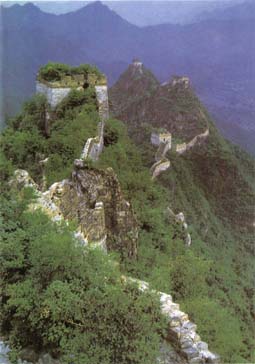| Tools: Save | Print | E-mail | Most Read |
| Chinese Scientists Dispute Great Wall's Visibility from Space |
| Adjust font size: |
Chinese scientists have reopened the debate on whether or not the Great Wall is visible from space with the human eye, labeling it "impossible."
In a report published in Chinese science magazine Science & Technology Review, Dai Changda, Jiang Xiaoguang and Xi Xiaohuan, researchers with the
"The Great Wall contains some sections that are approximately 10 meters wide. But a 10-meter-wide object can only be seen with a naked eye from a maximum distance of 36 kilometers in extremely good weather conditions," Jiang Xiaoguang told Xinhua News Agency. "Since the definition of space is widely acknowledged as beginning 100 kilometers from the Earth, the 36 kilometer limit would be reached before a shuttle even entered orbit," he said. "Therefore the Great Wall is indeed invisible from space with the human eye."
"Obviously the human eye is very different from a camera and cannot pick up details that advanced photographic equipment can," Jiang noted. In March 2004, However, during
(Xinhua News Agency March 2, 2007) |
| Tools: Save | Print | E-mail | Most Read |
 |
| Related Stories |
|
Product Directory China Search |
Country Search Hot Buys |

